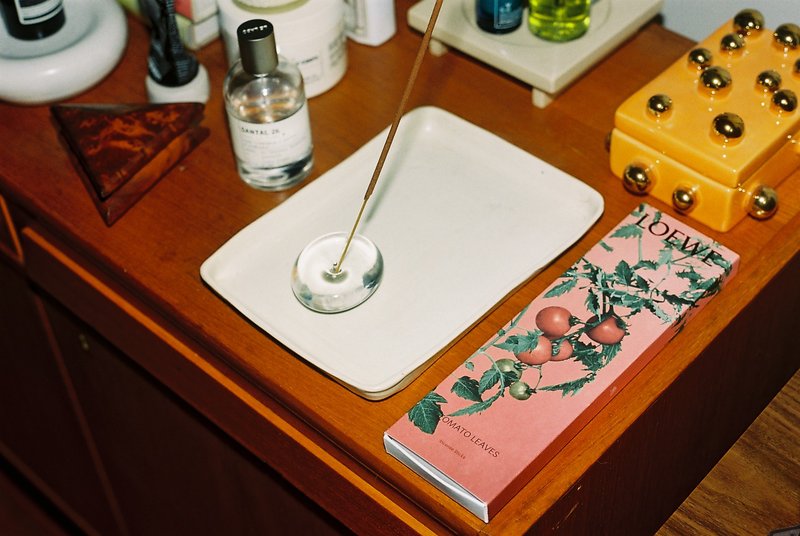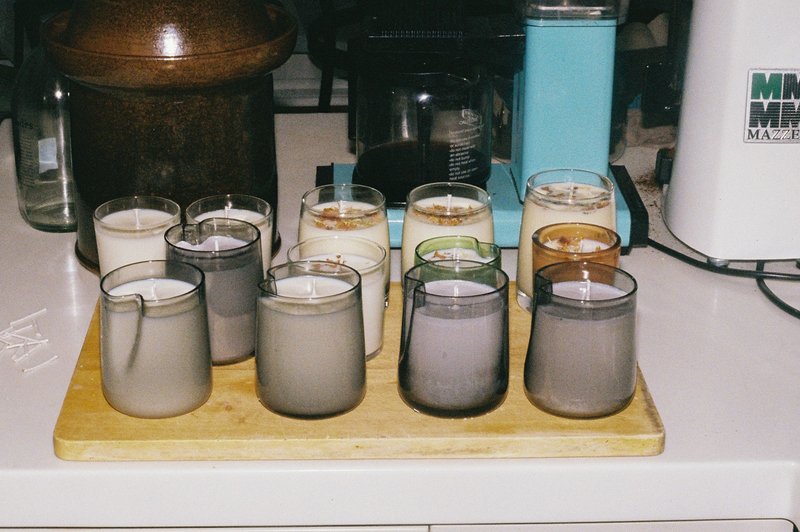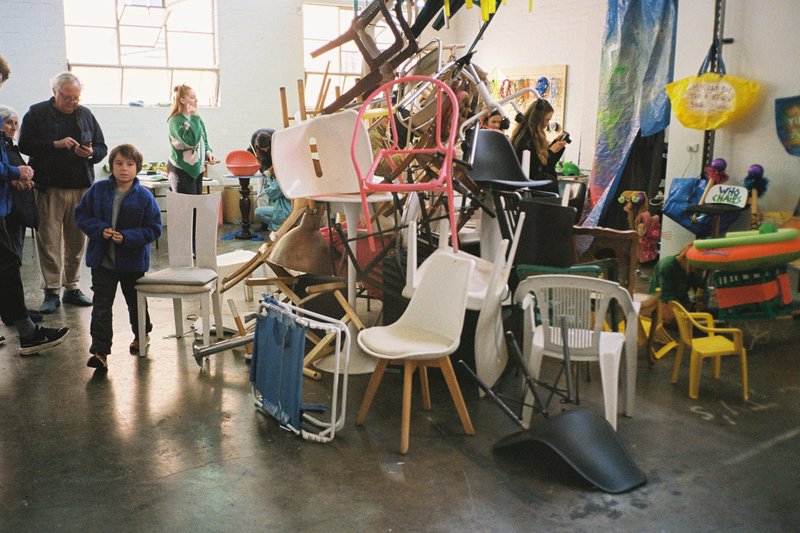When this article was originally published, the year was 2019 and the prompt was wireless technology La Marzocco was rolling out across their Linea Mini line, I had the Linea Mini Connected Machine Retrofit Kit installed. We affectionally chose a Mini Linea for our home for two reasons, one being that we love coffee (I also love making coffee) and second that we had become less interested in going out to get it. For some I understand a motivating factor would be waste, reducing it specifically, but I was not buying a lot of takeaway coffee, I was sitting in. And I have a KeepCup. I bought two in 2014 or 2015, the one with the cork, we still have them and occasionally use them so I was not contributing trash in any meaningful way.
That said, I feel to drink coffee out, for me at least, this establishment would serve specialty coffee and the coffee must be good. It is a bonus when the space is lovely and there is intention there and also, I want to feel my money is appreciated there. Why else would I bother. I can extract an espresso. Because of my work—which is largely communications for Ecoware Packaging and generally being across the topic of waste, I am constantly aware how much unnecessary things humans continue to produce and consume. I won’t go further on the specifics but yes, if you want to not create a lot of waste and also save yourself some money, this article and this iteration is more about creating coffee rituals at home. Equipment aside, this article otherwise remains largely unchanged.
La Marzocco recently hosted Connected Days, I am yet to listen to the keynote, but this is essentially their commitment to continue improvement and includes information about The Sync System—a collaboration between Mahlkönig (they make grinders) and La Marzocco that sees a Mahlkönig E80W Grind-by-Sync paired with a La Marzocco machine. The future is now. I have included a list of the wireless connected technology features available for the Mini Linea. This technology now comes standard. At the time of writing, the Mini Linea retails for AUD8,499 and the Linea Micra, released in 2023, AUD5,999.

La Marzocco Linea Mini morning coffee rituals
I read that a lot of people are on their phone first thing in the morning. That is not me. I am getting up to make coffee. Excellent coffee. Anything else can wait. After reviewing this article ahead of this update, I could see how we drink coffee had become something very uniform and perhaps that had more to do with being together for eleven years and working from home for seven. You become very comfortable in your space and habits become situational. We don’t do much “going out” anymore since there were limited opportunities to get out of the house or being over 30 or all of the above. We want the feeling of effort and intention without giving up our comfort. Today, the ritual is I make the coffee and my partner has his in bed and Goji (our Shiba) gets treats. She will hear the grinder and get out of her bed and up onto ours and if she is wondering why I am taking too long (probably recalibrating the grind) she comes looking for me. Then I make my coffee, a double shot espresso and take it to my desk. We’re drinking Single O.
For us, we only started living on our own a year ago, and in the last eight years we have moved our machine into three different kitchens, our current rental, I was worried there wasn't enough bench space, but we made it work. I don’t add to our house a lot, but I'm very much about rearranging things and giving objects an updated purpose without having to acquire more objects. And on that note, a couple of years back I realised that the Mini Linea actually had a very practical off label use—as a clothes dryer. I often have towels or clothing lying on it, the machine runs at 93.5 degrees Celsius. It also works well for thoroughly drying wooden spoons.

Redefining upgrade. La Marzocco's wireless technology
La Marzocco had been quietly adding the necessary hardware into its latest production runs. So much like Patagonia's 'Don't Buy This Jacket' La Marzocco don't want you to buy a new machine—they will be offering a retrofit kit for Linea Mini and GS3 owners. Wireless upgrades are available for both Linea Mini, and GS3 machines and this technology upgrade allows you to:
Remotely turn the machine on or off Also with energy conservation in mind, often our phones are closer to us and so if you forget to turn your machine off at night or during the day if you already left for work you can do this remotely via the app.
Creation of an on/off schedule Ideal for saving energy, you can place your machine on standby. My partner and I have a schedule set to turn the machine on at 5 AM, so the Linea Mini is sufficiently heated for those early mornings.
Coffee brewed and machine flushing counter This is more for extending the useful life of your machine. Ours is serviced annually, though daily maintenance and more specifically backflushing is vital. Coffee oils are acidic — the group head and seals will be the worst affected, deteriorating the metal and blocking water flow. That and residual coffee grinds and oils will produce a bitter espresso. So yes, I'm definitely flushing the machine more.
Enabling and setting pre-brewing on/off times Once Dave from La Marzocco explained pre-infusion to me, I turned pre-infusion on. I felt like I had been making espresso wrong all this time. Pre-infusion refers to the process of gently soaking the ground coffee in your portafilter before extraction. With pre-infusion, water evenly penetrates the grounds to ensure that the entire bed has the same amount of water flowing through it throughout extraction. And in theory, you should have fewer instances of channelling — where water finds a path of low resistance and flows through it, avoiding nearby grounds. Uneven tamping will do this too. You'll end up with an uneven extraction and an inferior espresso. Pre-infusion has unlevelled the ritual.
Boiler temperature status and control After speaking with Kōkako’s head roaster, Sam McTavish I now have a better understanding of how brewing temperature can impact flavour profile. Adjusting the temperature allows you to either accentuate flavour profiles or correct for less desirable characteristics. If your coffee has a sharp acidity you could, for example, increase your Linea Mini’s temperature, which would produce a lower acidity espresso. My machine is currently set at 94℃. I’ll be trialling temperatures between 90℃ and 93℃ as per Sam’s recommendations. Let’s see which produces an even better espresso.

The La Marzocco Linea Mini is an investment
I never found takeaway to be an enjoyable coffee experience. It was late 2017 that my partner and I decided to invest in a La Marzocco Linea Mini. The Linea Mini is handmade with the same components used in La Marzocco's commercial Linea Classic, which ensures the same quality and durability of which the brand is synonymous. The Linea Classic is the machine that launched the specialty coffee movement of the early 1990s. In 1939, it was La Marzocco that developed and patented the first coffee machine with a horizontal boiler, now the industry standard. And still today, La Marzocco is an artisan company. People are making these machines by hand in Italy.
Unfortunately today, a society moulded around capitalism, conditioned to expect things to cost so little, challenging this mentality is considered niche and alternative. If we are honest, you cannot buy an espresso machine for a few hundred dollars and those pod coffee machines—they'll tell you how you can recycle their packaging because they're very aware of just how much waste they're putting out into the world. We need to demand quality and within that, accountability from everywhere and everything; the people we surround ourselves with, the products we buy. Planned obsolescence is real.

Culture creates change
Now you might have your sights on this machine or another espresso machine and are wondering if it might be worth it. I love the Mini Linea, it is one of the best things we have bought, and I will not upgrade to a newer model, there is no need. These machines come with a lifetime guarantee. Ours is serviced annually and you maintain it to minimise calcification, use the correct water for example. Now, recently, I have been drinking filter and plunger and what I came to realise is that whether I use instant (there are some specialty roasters that have really good instant coffee), a Chemex or Moccamaster, what I really appreciate is quality coffee that I make and drink at home. Getting coffee out, or takeaway is a habit that’s done so much good for local business owners but what about setting yourself up for a lifetime, self reliability. Every trip to buy coffee is time you could spend elsewhere, focused elsewhere.
So maybe now you are thinking coffee is best at home, maybe. But the set up, a plunger, you could snap one up for anywhere between $20 on the resale market to $500 for the Stelton press which is very nice and you can make excellent coffee at home, and you might surprise yourself by how taken you are by that experience. The La Marzocco Mini Linea is the last coffee machine I’ll ever need. It is how I feel about materialism broadly—the motives that cause us to make such purchases, the emotional incline towards objects and items, can we through materialism become less a victim of radical commercialism and consumerism? I think so.








